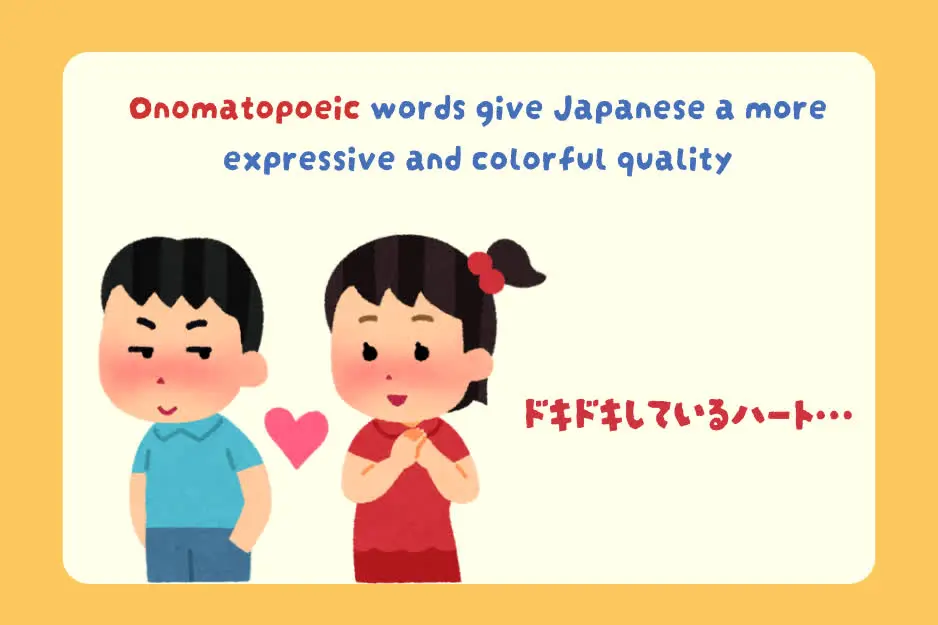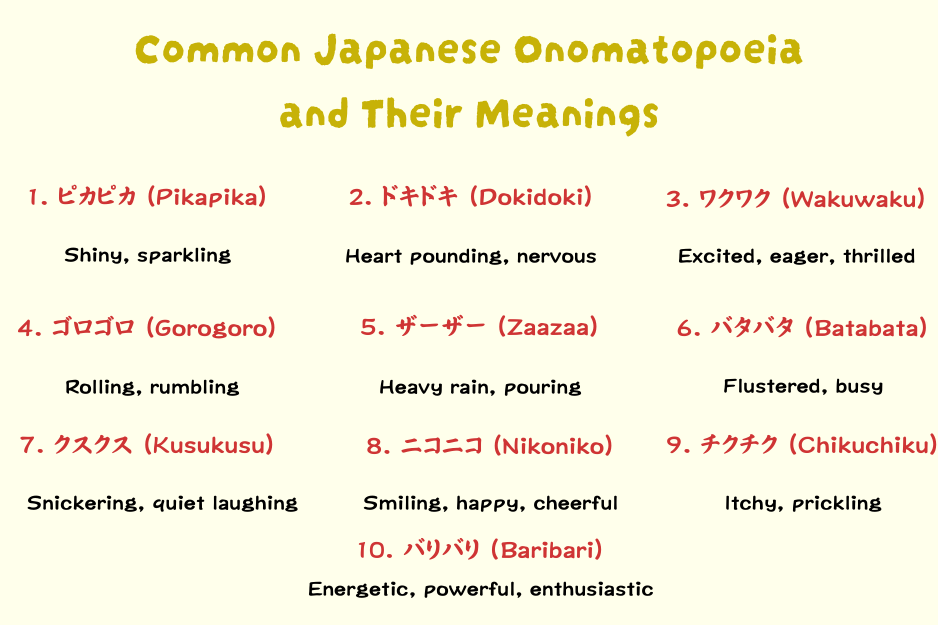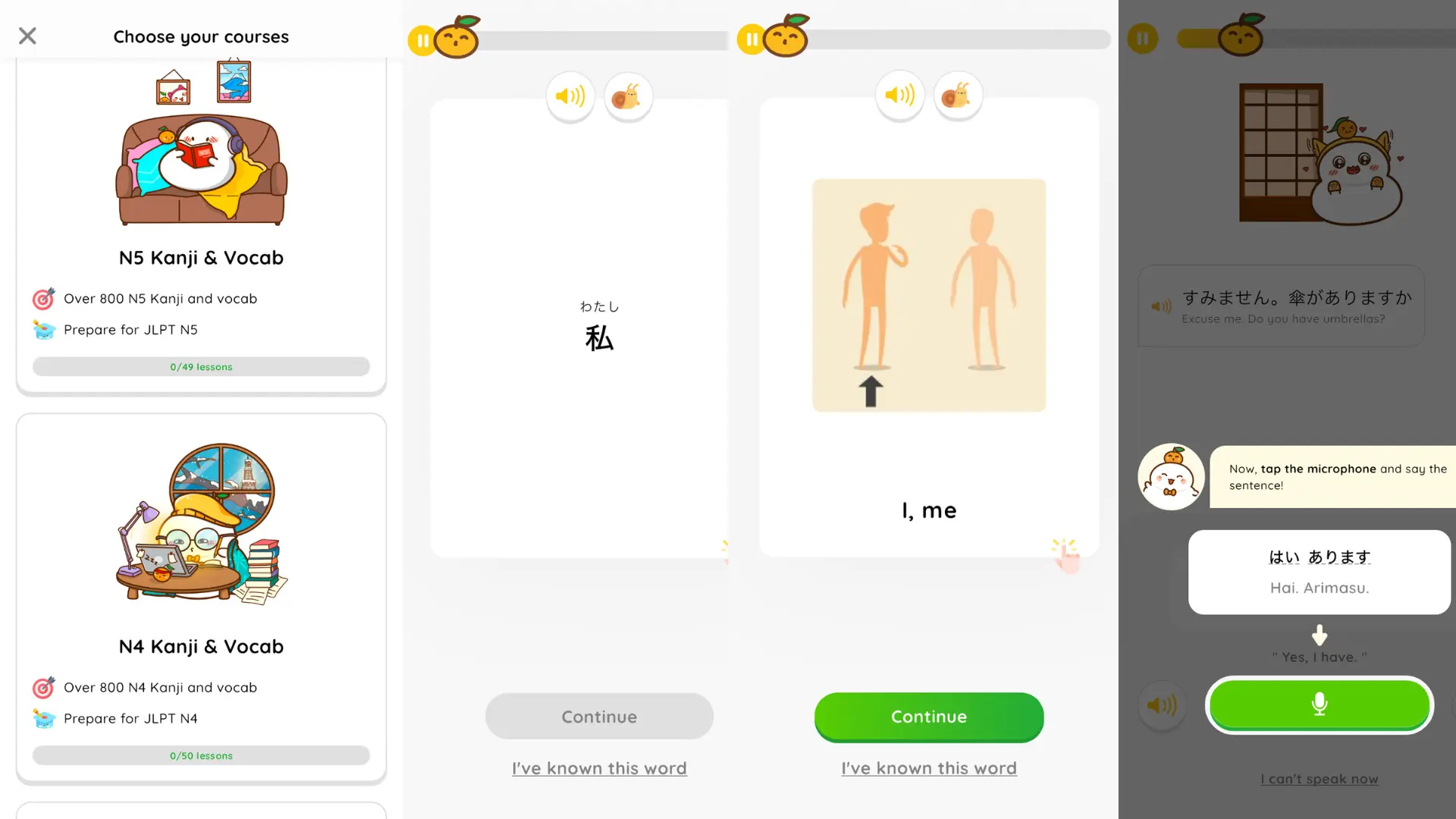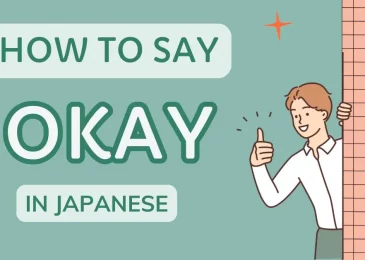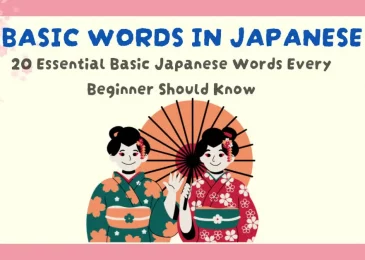Japanese is known for its rich, unique linguistic features, and one of the most intriguing aspects of the language is its use of onomatopoeia. Unlike many other languages, Japanese has a vast array of onomatopoeic words that mimic sounds, emotions, and actions. These words not only make the language more expressive but also give learners a deeper insight into Japanese culture, communication, and daily life.
In this article, we’ll explore the fascinating world of Japanese onomatopoeia—what it is, why it’s important, and how you can learn it effectively. Whether you’re a beginner or an advanced learner, mastering onomatopoeia can enhance your Japanese skills and make your conversations more natural. Plus, we’ll introduce useful tools like MochiKanji, which can help you learn these quirky words more easily.
- What is Onomatopoeia in Japanese?
- Why is Onomatopoeia Important in Japanese?
- Common Japanese Onomatopoeia and Their Meanings
- How to Learn Japanese Onomatopoeia Effectively
- Conclusion: Embrace the Sounds of Japanese!
What is Onomatopoeia in Japanese?
Onomatopoeia refers to words that phonetically imitate or resemble the sound that they describe. For example, in English, words like “buzz,” “meow,” or “tick-tock” are onomatopoeic. Japanese, however, takes this concept much further, with two distinct categories of onomatopoeia that serve different purposes:
- Giseigo (擬声語) – Words that represent actual sounds, such as the sound of animals, machines, or environmental noises. Examples include:
- ワンワン (wan-wan) – the sound of a dog barking (“woof woof”).
- ゴロゴロ (goro-goro) – the rumbling sound of thunder or a stomach growling.
- Gitaigo (擬態語) – Words that describe actions, states, or emotions, which don’t directly represent a sound but instead convey a feeling or condition. These can refer to physical actions, emotional states, or even appearances. Examples include:
- ドキドキ (doki-doki) – the sound of a racing heartbeat, often used to express nervousness or excitement.
- ふわふわ (fuwa-fuwa) – the sensation of something soft and fluffy, like a cloud or a marshmallow.
- Giongo (擬音語) and Gitaigo (擬態語) are essential in Japanese because they offer a vivid and creative way to convey emotions, actions, and states of being. They’re a way of expressing things that are more difficult to articulate with regular words.
In short, onomatopoeia plays an integral role in communication, often helping to bridge the gap between sounds and sensory experiences.
Why is Onomatopoeia Important in Japanese?
Incorporating onomatopoeia into your Japanese learning can significantly improve your language skills. Here’s why:
1. Enhances Expression
Onomatopoeic words give Japanese a more expressive and colorful quality. They convey more than just the literal meaning of a word—they evoke emotions, sensations, and actions. Using these words in conversation allows you to express yourself more vividly and naturally, which is one of the keys to mastering Japanese.
For instance, imagine you are describing a nervous person. Instead of simply saying, “I feel nervous,” you can use the word ドキドキ (doki-doki) to describe your heart racing. This adds emotional depth to the statement and makes your language more relatable.
2. Cultural Insight
Japanese onomatopoeia reflects much about the culture and how people perceive the world. For example, the use of ぱちぱち (pachi-pachi) to describe the sound of applause or a crackling fire emphasizes the focus on sensory experiences and attention to detail in Japanese culture. By learning these words, you gain a richer understanding of the culture itself.
3. Widely Used in Everyday Life
Onomatopoeia is commonly used in everyday conversations, manga, anime, and even advertisements. Knowing these words will allow you to better understand casual conversations, especially when watching Japanese TV shows, anime, or reading manga. Onomatopoeic expressions often appear in these forms of media, making them a fun and essential part of your learning experience.
4. Aiding Memory Retention
Learning onomatopoeic words can also aid in memory retention. Because these words are inherently visual and sensory, they tend to stick in your mind more easily than more abstract vocabulary. When you associate a word with an action or sound, your brain has a more concrete mental image to hold onto.
Common Japanese Onomatopoeia and Their Meanings
Onomatopoeia in Japanese are more than just words that describe sounds. They often convey emotions, states of being, and characteristics of objects or actions. Below are some of the most commonly used onomatopoeic words you will encounter in everyday conversations, anime, manga, and Japanese culture. Understanding these words can give you a deeper insight into Japanese language and culture.
1. ピカピカ (Pikapika)
- Meaning: Shiny, sparkling, brand new
- Explanation: “Pika pika” is used to describe something that is gleaming or shiny, often referring to something clean or brand new. For example, a freshly polished car or a brand-new object might be described as “ピカピカ” (Pikapika).
- Example: “ピカピカの車” (Pikapika no kuruma) means “a shiny car.”
2. ドキドキ (Dokidoki)
- Meaning: Heart pounding, nervous, excited
- Explanation: This word is used to describe the feeling of your heart racing, especially when you’re nervous, anxious, or excited. It’s often associated with moments of anticipation or excitement.
- Example: “デートの前にドキドキしている” (Deeto no mae ni dokidoki shite iru) means “I’m nervous before the date.”
3. ワクワク (Wakuwaku)
- Meaning: Excited, eager, thrilled
- Explanation: “Wakuwaku” is used to express feelings of excitement and anticipation about something good that’s coming up. It can be used to describe excitement before an event, trip, or any positive occasion.
- Example: “旅行に行くのがワクワクする” (Ryokou ni iku no ga wakuwaku suru) means “I’m excited to go on the trip.”
4. ゴロゴロ (Gorogoro)
- Meaning: Rolling, rumbling, or relaxing
- Explanation: “Gorogoro” describes the sound or motion of something rolling, such as stones or thunder. It can also represent a state of laziness, such as lounging around or relaxing.
- Example: “ゴロゴロした石” (Gorogoro shita ishi) means “rolling stones.”
- Example: “ゴロゴロして過ごす” (Gorogoro shite sugosu) means “to spend time relaxing.”
5. ザーザー (Zaazaa)
- Meaning: Heavy rain, pouring
- Explanation: This onomatopoeic word describes the sound of heavy rain or pouring water. It mimics the sound of rain hitting the ground or windows.
- Example: “ザーザー降る雨” (Zaazaa furu ame) means “pouring rain.”
6. バタバタ (Batabata)
- Meaning: Flustered, busy, running around
- Explanation: “Batabata” describes a situation where someone is running around frantically or being busy. It can also describe the sound of hurried footsteps or actions.
- Example: “朝はバタバタしている” (Asa wa bata bata shite iru) means “I’m busy and flustered in the morning.”
7. クスクス (Kusukusu)
- Meaning: Snickering, quiet laughing
- Explanation: This word represents the sound of quiet or suppressed laughter. It is often used to describe soft laughter, usually when someone tries not to laugh out loud.
- Example: “彼女はクスクス笑っていた” (Kanojo wa kusukusu waratte ita) means “She was chuckling.”
8. ニコニコ (Nikoniko)
- Meaning: Smiling, happy, cheerful
- Explanation: “Nikoniko” is used to describe someone who is smiling or in a good mood. It’s often used to describe people who are cheerful and radiate happiness.
- Example: “彼はいつもニコニコしている” (Kare wa itsumo nikoniko shite iru) means “He is always smiling.”
9. チクチク (Chikuchiku)
- Meaning: Itchy, prickling
- Explanation: “Chikuchiku” describes the sensation of something prickling or causing an itchy feeling. It can refer to both physical sensations (like itching) or emotional discomfort (like nagging feelings).
- Example: “足がチクチクする” (Ashi ga chikuchiku suru) means “My foot is itching.”
10. バリバリ (Baribari)
- Meaning: Energetic, powerful, enthusiastic
- Explanation: “Baribari” is used to describe someone full of energy, working hard, or doing something with great effort and enthusiasm.
- Example: “彼はバリバリ働いている” (Kare wa baribari hataraite iru) means “He is working energetically.”
How to Learn Japanese Onomatopoeia Effectively
Learning onomatopoeia can be challenging due to the sheer number of words and their subtle differences. However, there are ways to make the process easier and more engaging.
1. Start with the Basics
If you’re a beginner, start by learning the most commonly used onomatopoeia. Focus on words that describe everyday situations, such as ドキドキ (doki-doki) for excitement or ザーザー (zaa-zaa) for rain. As you become more comfortable with these, gradually add more complex expressions to your repertoire.
2. Practice with Context
Understanding the context in which onomatopoeia is used is crucial. In Japanese, these words can be paired with other words or used in phrases to convey specific meanings. Practicing with sample sentences or in conversations will help solidify your understanding and improve retention.
3. Use Flashcards and Spaced Repetition
Tools like MochiKanji provide a great way to practice onomatopoeia. MochiKanji uses spaced repetition and interactive flashcards to reinforce memory retention. While MochiKanji primarily focuses on Kanji and vocabulary, it also covers a wide range of useful vocabulary, including onomatopoeia. This makes learning both fun and effective.
With MochiKanji, you can:
- Learn the correct stroke order and pronunciation of Kanji associated with onomatopoeic words.
- Reinforce memory through spaced repetition for better retention.
- Gain a deeper understanding of the context and usage of each word.
4. Engage with Media
Watch anime, read manga, or listen to Japanese podcasts where onomatopoeic words are commonly used. This immersive approach will help you hear the words in context and understand how they’re used in natural conversation.
Conclusion: Embrace the Sounds of Japanese!
Onomatopoeia is one of the most unique and fun aspects of the Japanese language. Whether you’re describing the sound of rain or expressing your excitement, these words offer a lively and expressive way to communicate. While learning them may seem challenging at first, tools like MochiKanji can help you master them more efficiently, giving you a deeper connection to the language and culture.
By incorporating onomatopoeia into your vocabulary and practice routine, you’ll not only improve your Japanese but also enhance your ability to communicate more naturally and vividly.

